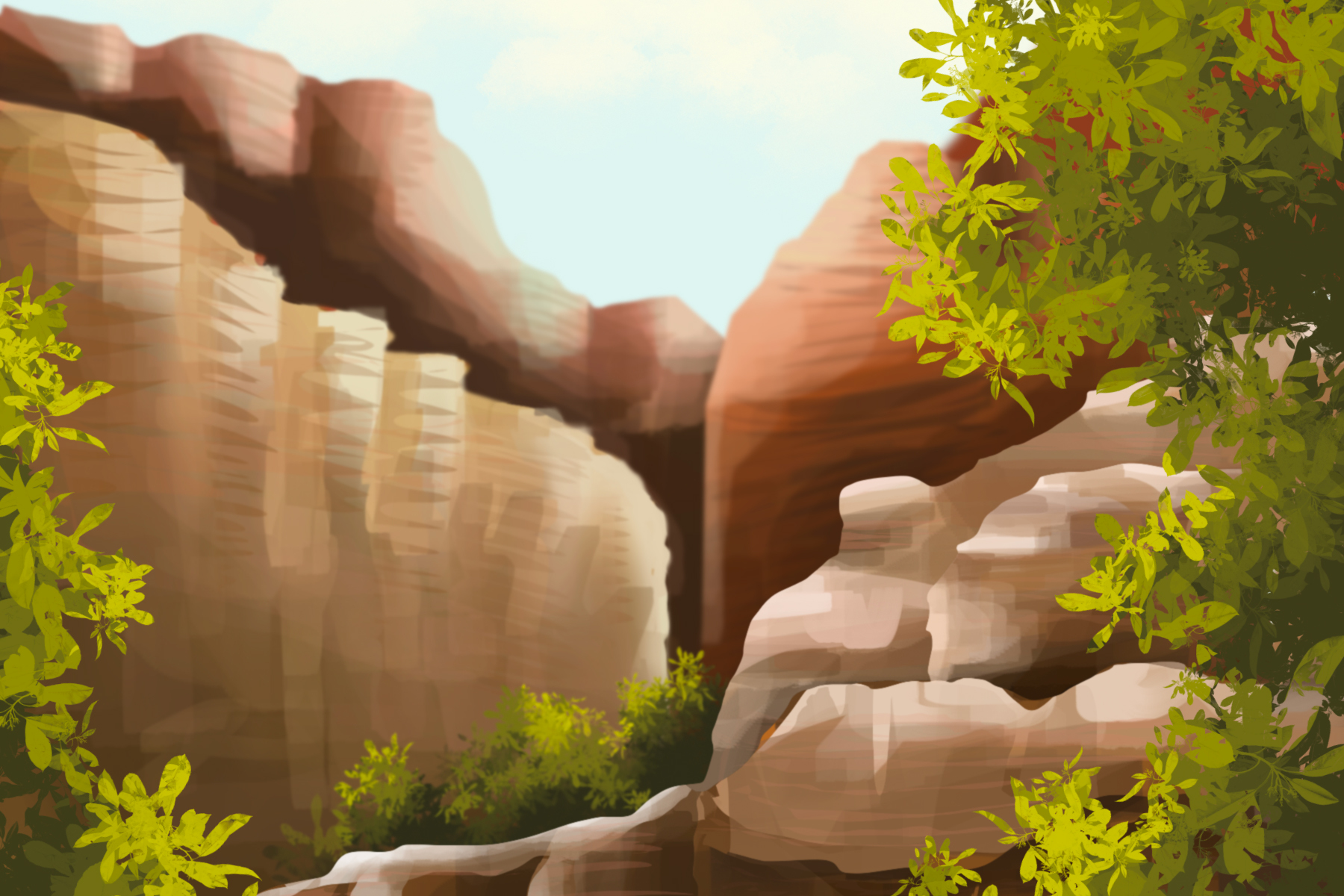Although quarantine has forced many people indoors, it’s important to still take part in the world outside. Getting out doesn’t necessarily mean hanging out at the movie theater, window shopping or hanging out with friends; these are all high-risk activities during a pandemic. However, an excellent way to still get a breath of fresh air outside the house is by spending time in nature.
As human beings, we crave nature. Nature has been proven to be “deeply powerful and healing for our minds, bodies and souls.” In fact, research from Harvard Medical School has found that mood disorders can be alleviated by spending more time outdoors. Nature also helps with pain and post-operative recovery, calms ADHD and decreases the risk for certain health problems. Despite all the benefits that spending time in nature boasts, people are spending less time outside than ever before.
A study conducted by The Nature of Americans National Report found that over half of adults reported spending five hours or less in nature each week. Parents of children ages 8 through 12 said that their children spent three times as much time using technology than they did playing outside. In comparison, there were 1 billion fewer outdoor excursions, such as hikes and climbs, in 2018 than in 2008.
Prior to the pandemic, the reasons why people spent so much more time indoors ranged from work to technology to a cost of entry. However, with so many people now spending the majority of their time at home, this is the perfect time to explore nature.
National parks are so timeless and fun because the parks have been preserved and kept to their natural states as much as possible. There are a total of 62 national parks in the United States across 29 states and two territories. The possibilities of there being one or more national parks in your state or nearby are incredibly high.
They are also very affordable. Usually, the average entrance ticket to a national park is $30 per vehicle while the annual pass is only $80. The annual pass covers entrance fees to all 419 units within the National Park Service, although only 109 charge an entrance fee. However, most national parks that previously charged an entrance fee are now waiving them due to the pandemic.
Here are some must-visit, often-overlooked national parks in the mainland U.S. that are my personal favorites.
1. Zion National Park — Utah
Zion National Park was the most recent national park I had visited. Up until recently, Zion only allowed in as many cars into the park as there were parking spots. As a result, my family and I got in line to go into the park at 3 in the morning. Fortunately, Zion’s shuttle services resumed on July 1, which means there’s no need to worry about getting to the park early.
The most popular trail at Zion is known as the Narrows, which is a hike completed almost entirely by wading in the Virgin River. Towering canyon walls frame the river and the trail on both sides. Unlike some other national park trails, there is no ultimate “scenic site” that you arrive at after hiking X number of miles. Instead, the Narrows is more about the journey itself and enjoying the beauty of your surroundings.
2. Sequoia and Kings Canyon National Park — California
Trees! That’s the one word that best describes Sequoia and Kings Canyon National Park. But don’t be fooled into thinking that the park is boring simply because its initial purpose was to protect sequoia trees.
Although Sequoia and Kings Canyon are two separate national parks, they’re contiguous with each other and rangers jointly administer them. Both parks are home to some of the largest and oldest trees in the world. Visit the area, and a forest of ancient, looming sequoias will surround you.
If you find that trees are your thing, then you’ll also want to check out Redwood National Park and Joshua Tree National Park in California or the Petrified Forest National Park in Arizona.
3. Arches National Park — Utah
Arches National Park has some of the most fascinating views in the natural world. The entire park sits around the 2,000 or so natural sandstone arches and rock formations scattered throughout the landscape. The park has also been certified as an International Dark Sky Park, which means that it features some of the highest quality night skies in the world. As a result, Arches National Park is an excellent place to go for stargazing.
4. Congaree National Park — South Carolina
Swampy land may not be the first place on your list to roam, but Congaree National Park is still beautiful in its own right. For one thing, the park has one of the highest concentrations of champion trees in the world. Champion trees are the largest trees of its specific specimen, and Congaree holds 15 of them.
Within the United States, the park preserves the largest tract of old growth bottomland hardwood forest. Although there are numerous definitions, an old growth forest generally refers to a very old, undisturbed forest. It’s estimated that around 70% to 95% of bottomland hardwood forests were destroyed from the start of European settlement to now. Congaree is the last of the hardwood forests that once stretched across the eastern United States.
5. Glacier National Park — Montana
Glacier National Park isn’t only a beautiful park to visit. It’s also a warning for the future to come. Glacier National Park was the first International Peace Park as it straddles the boundary between the United States and Canada. It’s also the first transboundary dark sky park. Glacier National Park’s nickname is “The Crown of the Continent” because it has some of the most impressive mountain ranges in North America. Glaciers from the last ice age carved the many valleys and mountain peaks in the park.
Examination of photographic and cartographic evidence has found that there were 150 glaciers in the park in the 19th century. Because of global warming and glacier retreat, just 25 remain large enough to be considered “active glaciers.” If current warming patterns continue, scientists estimate that by 2030, there will be no glaciers left in Glacier National Park.
Some of the natural wonders created by Mother Nature are just a road trip away, so take the time this summer to enjoy the great outdoors. National parks are an integral element of America. They offer rich histories, a wide selection of different environments and a much-needed breath of fresh air. National parks will help you get in touch with your wild side, and who knows? It might just teach you a thing or two about conservation, too.
















